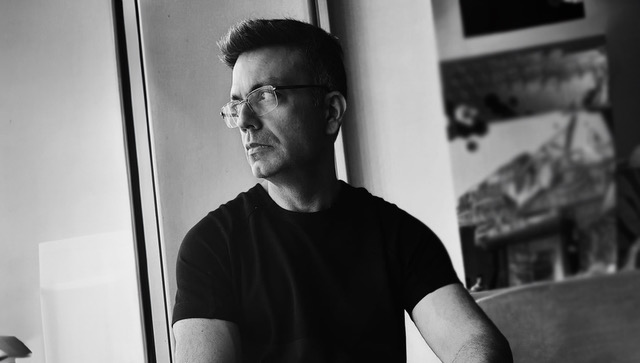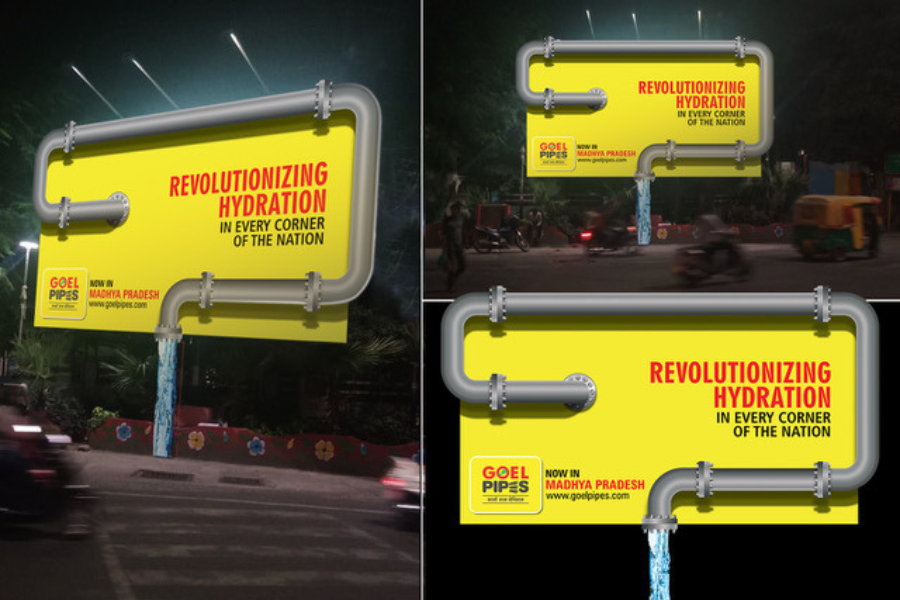‘Creativity holds the potential to elevate OOH advertising campaigns’
By M4G Bureau - March 20, 2024
However, many a time the scope of creativity is circumscribed by impediments like clients’ budgetary constraints, regulatory restrictions & long approval processes, says Zubin Jokhi, Creative Director, OAP India

OOH provides great scope for creativity, and yet the OOH landscape in India does not see a high level of creativity everywhere. In your view, is creativity essentially about innovations or does it apply to every campaign that is launched?
Although OOH advertising presents significant avenues for creativity, numerous factors contribute to the compromise in creativity levels among campaigns in the nation.
Budgetary limitations often serve as a significant impediment to the flourishing of creativity within OOH campaigns. Many advertisers, constrained by financial considerations, tend to prioritise cost-effective strategies over innovative approaches. For instance, a well-established toothpaste brand sleeked an innovative idea to showcase their new packaging on both the carton and tube, also highlighting the unique paste colour. An imaginative proposal was put forth—a rendition of a 3D model of a carton with a tube protruding from it, surrounded by a translucent paste material forming a frame-like structure on the hoarding. The central creative element was to be positioned within this structure, with caustic reflections of the paste on the creative adding to its visual impact and highlighting the translucent nature of the paste. The client enthusiastically embraced this concept and approved it. However, upon receiving the cost estimate for implementing such innovation on only one hoarding in every city, the client backed off. The decision was made to opt for a more cost-effective solution. Consequently, the 3D model was altered to a simple cutout, and the number of advertising sites was increased instead. This compromise resulted in a less impactful creative execution, the visual effect was stripped of its uniqueness and the impact was totally lost. Instances like this are not uncommon in the outdoor industry.
While the specific circumstances may vary, the underlying pattern often remains the same. More often than not, creativity tends to incur additional costs, prompting clients to opt for more budget-friendly alternatives.
In essence, while creativity holds the potential to elevate outdoor advertising campaigns to new heights, financial constraints frequently hinder its full realisation, compelling creative departments to make compromises and as a result impact the effectiveness of the creative execution.
In many instances, the mainline creative agencies tend to exert considerable influence, often taking charge and imposing their preferences on creativity and its execution. Consequently, ideas may be either accepted or rejected solely at their discretion. In such scenarios, clients frequently defer to the directives of the creative agency, even if they themselves favour ideas proposed by outdoor agencies.
Regulatory restrictions and local directives also play a significant role in constraining the creative freedom of advertisers in particular regions or for specific types of OOH advertising. This often results in a lack of variety and originality in campaigns. For instance the approval processes are lengthy and cumbersome for certain kinds of innovation that can deter advertisers from pursuing creative ideas that may require timely execution, leading to missed opportunities for impactful campaigns.
Lack of flexibility in regulatory frameworks that fail to adapt to changing technological advancements or emerging trends in advertising does hamper innovation and prevent the exploration of new creative avenues. Inconsistent rules and regulations that are subject to frequent change pose a challenge. What may be acceptable today might not be permitted tomorrow. For example, LED displays are prevalent throughout Mumbai currently. However, their true potential extends beyond merely displaying slideshows. They can serve as a comprehensive medium for showcasing engaging motion graphic animations, both 2D and 3D, as well as anamorphic animations. Additionally, there's the possibility of integrating traditional hoarding with LED panels, creating hybrid displays that enhance outdoor impact and storytelling in a highly effective manner. Unfortunately, the potential for expanding outdoor horizons and creative expressions is hindered when regulatory norms shift abruptly, limiting possibilities from innovative animations to simpler slide shows.

In the quest to execute campaigns and generate memorable creative innovations, the innovative aspect frequently takes a backseat due to various factors, causing many ground-breaking ideas to remain unrealised. These concepts are often unused, relegated to folders, and may only be showcased to potential clients as a demonstration of creativity, rather than being implemented in actual campaigns.
What are the typical challenges that you see when handling the creative side of campaigns, and how do you raise the creative quotient of campaigns?
The answer lies in a thorough evaluation of various factors. Allow me to guide you through a typical ideation process, starting from inception to execution.
Upon receiving a brief, it is typically categorised into two segments: innovation ideas centred on an existing creative, and standalone outdoor concept that may or may not be related to the client's shared creative. Alternatively, the brief may take the form of a pitch or ideation process where the client may not provide any existing creative or even the actual product images, particularly common during new product launches such as automobiles, supplemented with a just a creative brief.
In the scenario where the client shares the creative, I typically consider two approaches. Firstly, I explore traditional methods, given the common occurrence of budget constraints. Secondly, I look into the possibilities of incorporating 3D elements along with LED panels and LED lighting to accentuate various aspects of the creative, aiming to make it stand out and effectively communicate the intended message while highlighting the brand, product, and brand message as clearly and effectively as possible.
The second set of briefs involves concept development, which entails free-thinking and approaching the creative process with an open mind. This involves exploring creative possibilities from an outdoor perspective, unconstrained by existing materials or guidelines.
However, the extent of creative possibilities within the outdoor space is heavily influenced by regulations. Therefore, it's imperative to advocate for improved regulatory frameworks that endorse creativity and innovation in outdoor advertising.
How much does recognition of creativity matter for the team, and in that context, tell us how awards win matter, such as, winning OAA awards?
Recognition of creativity holds a lot of importance for teams in any sectors, validating their efforts, talent, and innovative ideas. Achieving esteemed recognition like the OAA not only boosts team morale but also solidifies their reputation and credibility within the industry and motivates them to excel in their future creative pursuits.

Stay on top of OOH media trends

-4_140_270.png)
_140_270.png)
-2_140_270.png)





